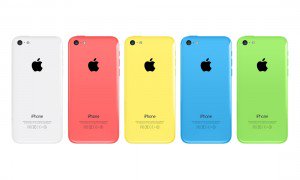Share This
Related Posts
Tags
Apple’s October Keynote
By Anca Gagiuc on Oct 30, 2013 in Technology
Apple’s Oct. 22 product update event in San Francisco introduced a few new devices and detailed infor mation about recent soft-launched products.
mation about recent soft-launched products.
Some techfiends focused on the iPad models, for others the Mac Pro held the stage. Many Apple fans the announcement of the Mavericks OS X with joy, while a few received it with suspicion. New MacBooks and news about Apps completed the event.
CEO Tim Cook presented the numbers: 9 million iPhones sold in the weekend after the launch, the biggest iPhone launch so far. In just five days after the launch, over 200 million devices were running on iOS7 making this the fastest software update in history. On iTunes Radio, 20 million listeners who have accessed over 1 billion songs. The App Store surpassed 1 million apps and the users have downloaded more than 60 billion of them. The iPad with 170 million devices sold, and holds 81 percent of the global tablet user share.
Craig Federighi re-introduced the Mavericks OS X; we described it a little while back. The most important features presented at this special event are the improvement in power efficiency (+1 hour of web browsing), as well as the compressed memory feature that will keep the OS running smoothly while being able to compress inactive data.
Graphics are upgraded and the integrated graphics support now OpenCL (the magic trick that improves GPU – up to 1.8 X faster than the previous version). Safari, Pages, and the Calendar have been intelligently improved, and now the Maps app is now on the Mac, flaunting a gorgeous fly-over.
iBooks also landed on the Mac and Reader became part of the OS X. The most surprising fact about the new version of the operating system is the no price policy – everyone with Snow Leopard, Lion, and Mountain Lion can upgrade for free to Mavericks. Cats were costly, but beaches are free.
Phil Schiller introduced the slimmer figure of the 13-inch MacBook Pro, available with and without Retina display. The device is now 0.71-inch thick and weighs 3.46 pounds, not a big drop, but significant if used on-the-go. The latest 2.4 GHz Core i5 Intel Haswell processor has been added under the hood, next to the Intel Iris GPU; 4GB RAM and 128GB SSD are part of the package, at just $1,300. The 15-inch MBP is powered by a 2.0 GHz quad-core i7 Intel Crystalwell with 8GB of RAM, a 256 SSD, and the Intel Pro GPU, at $2,000.
All Apple devices are environment-friendly. Among the checklist point are ENERGY STAR 6, EPEAT Gold, BFR free, and PVC-free.
It was Phil Schiller who presented perhaps the most amazing device of the October 22nd special event – the cylindrical Mac Pro. This stunning machine runs on Intel Xeon E5 with 4 to 12 cores, topping out at 7 teraflops of computing power, with up to 30 MB L3 cache and up to 12 GB of GDDR5. The device has up to 60GB/s bandwidth and stunning graphics – the Mac Pro’s dual standard workstation GPUs run AMD FirePro graphics which support 4k video output. Connectivity wise, the Mac Pro features 4 USB 3 ports, 6 thunderbolt 2 ports, 2 1GB Ethernet ports, HDMI, and 802.11ac Wi-Fi.
“It is a computer that packs an incredible amount of power into one-eighth the volume of the previous model,” Schiller said at the event. It is the quietest Mac Pro (equal to the Mac mini) as it uses 70 percent less energy than the previous version. It can be purchased in December, starting at $2,999.
The 475,000 iPad apps deserved a new device so the fifth-generation iPad is here and is really thin. The iPad Air is 20 percent thinner than the previous version at 7.5mm and weighs 1 pound – it is the lightest full-size tablet currently available. The processor has been upgraded to the 64-bit system-on-chip A7, recently launched with the iPhone 5s, along with the M7 motion coprocessor.
The Air has taken design tips from the iPad mini, featuring thinner, metallic side bezels, an aluminum rear plate gently rounded at the edges, and a glass-fronted 2048 x 1536 resolution Retina display; dual microphones and the 5MB camera complete the device. It can be purchased in November, starting at $500.
The iPad mini has proved to be a real success since the very launch. Probably on purpose the engineers at Apple omitted then to include the Retina display. This year though, they fulfilled the most popular request of the customers. The beautiful Retina display brings to the mini the same resolution as the big iPad – 2048 x 1536 and 326ppi. As the iPhone 5S and the iPad Air, the iPad mini with Retina display is powered by the A7 chip that makes its CPU 4 times faster than before.
The M7 motion coprocessor is part of the mini device too and having the 802.11n Wi-Fi with MIMO tech should double the speed. Apple says the battery life reaches 10 hours, just as the bigger brother. The pricing starts at $400 and will be available later in November.
Eddie Cue stepped in to present the Apps path in the world of Apple. The iLife and iWork suites have received the most attention. Due to the 64-bit rejuvenation, iPhoto received a newer look and the Photobook creation is now available on the iPad as well. New iCloud integration makes working on movie projects seamless across all devices. Pages has a friendlier approach to graphic designers, offering text effects that with just a few clicks can create professional-looking posters.
The iCloud integration helps here as well, making collaboration super easy. Musicians can play with Garage Band’s 32 different tracks, on iOS devices as well, with the possibility to purchase new instruments and effects from inside the app.
